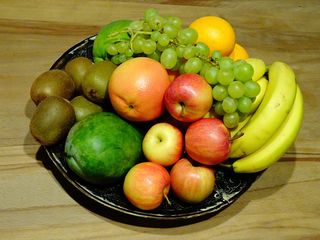Diet
Dieting and Eating for Weight Control?
Here are effective psychologically-based tips.
Posted June 20, 2017

Eating is a biological imperative, and nature has endowed us with strong mechanisms to stop hunger and to seek pleasure by eating tasty foods.
At the same time, overweight stresses biological systems so that hormones such as insulin decrease in potency and diseases such as hypertension and coronary heart disease are promoted.
It’s best to work with our biologically-based drives to eat for pleasure rather than to work against them. These psychologically-based methods can help do just that.
Avoid feelings of deprivation by not banning any particular food
Two teaspoons of any food will not ruin a relatively healthy eating plan. So if you encounter chocolate mousse or strawberry cheesecake at a party, know that you needn’t deprive yourself. Give yourself the option of eating it – by limiting your intake to two teaspoons.
Stimulate the pleasure centers of the brain by taking full advantage of these two teaspoons. Let each slowly roll on your tongue before swallowing to fully engage the taste receptors so that they will send a strong signal to your brain.
Include favorite foods in your regular meal plan
If you like peanut butter or chocolate, for example, you can include them regularly as part of your meals. Learn the calorie counts of these favorite foods .For calorie-dense favorites such as nuts and chocolate, check the labels and remember the calorie counts per serving, so you eat a 100-calorie portion.
Make a deal with yourself about your favorites
For example, if you decide to eat a 100-calorie portion of chocolate every day, negotiate a firm agreement with yourself: if you break the deal and eat a second portion, you will not be able to have your usual portion the following day. Avoiding future deprivation will give you increased willpower to keep to your daily allotment.
Keep colorful raw fruit and vegetables out on the counter-top
When you want a snack, they will be the first thing to catch your eye. The colors provide a pleasant visual stimulus. Change the types of foods left out so there is novelty, keeping as regulars foods that may be special favorites. Examples of counter-top foods include avocados, bananas, mandarin oranges, colored miniature peppers, and seasonal fruits like grapes and melon chunks.
A bonus of counter-top foods is that the taste of many foods is enhanced when they are not refrigerator-cold. Research has shown that the warmer your food is, the sweeter it will taste to you.
Leave on the supermarket shelves the foods you can’t resist eating – and eat them at someone else’s party
Almost everyone can name a few foods that, once a bite is taken, inevitably stimulate the urge to eat more of them. Some are shared addictions, such as potato chips. The food industry works hard to design these foods in such a way that they are almost impossible for anyone to resist.
Since the two-teaspoon rule for these super-addictive foods is very hard to apply, don’t stress yourself trying to resist these foods at home. Simply keep them out of your home by not buying them.
Instead, allow yourself to eat them occasionally when you encounter them elsewhere. That way, knowing you can sometimes get your fix, you will not feel deprived. Elsewhere, you will have built-in restraints. For example, at someone else’s home, you will be restrained by embarrassment - and other addicts - from eating the entire bowl of potato chips.


